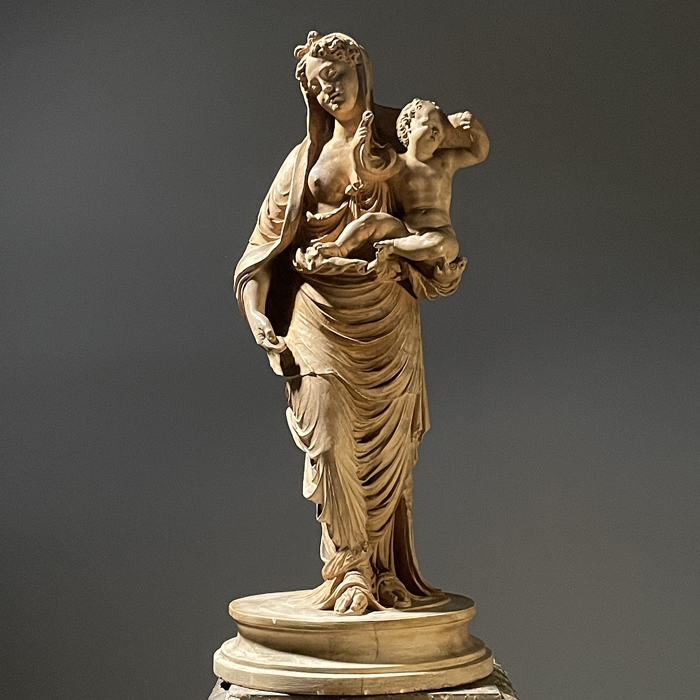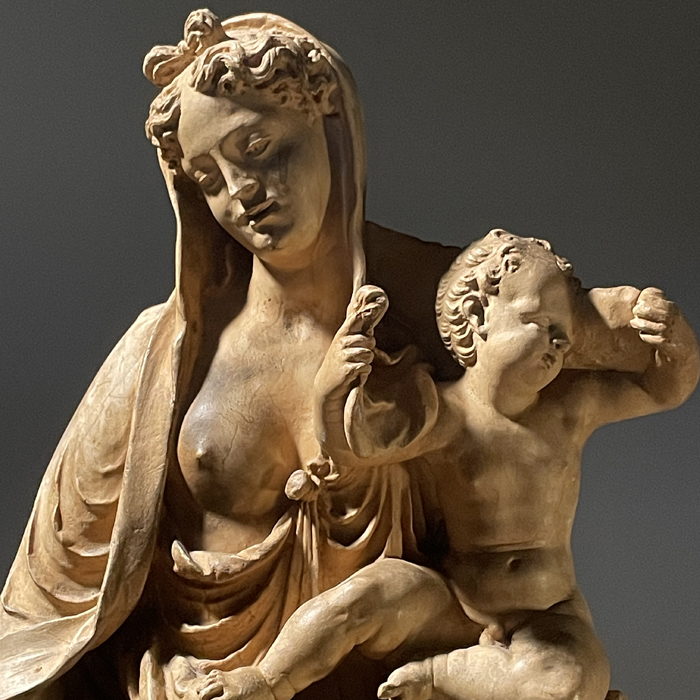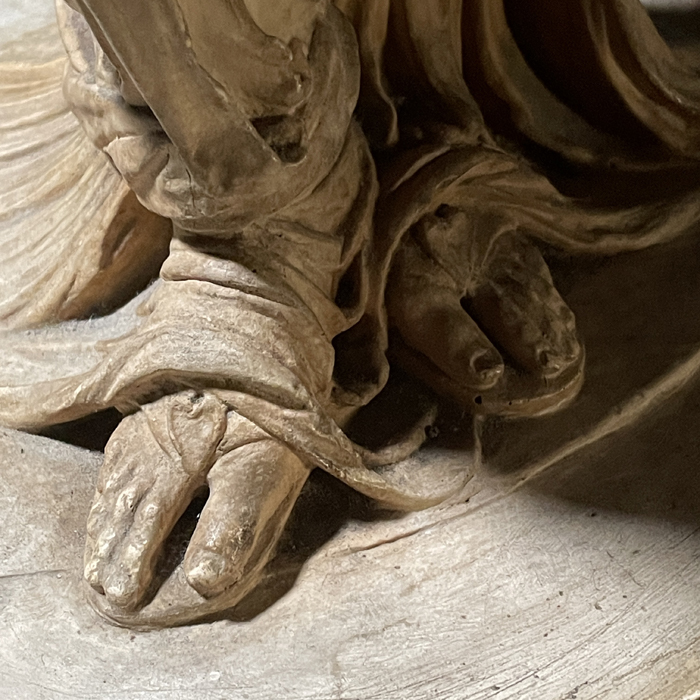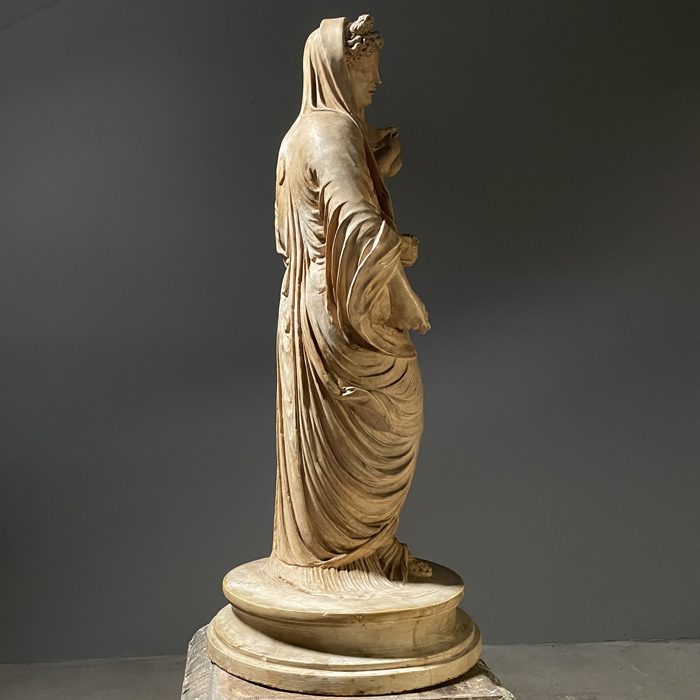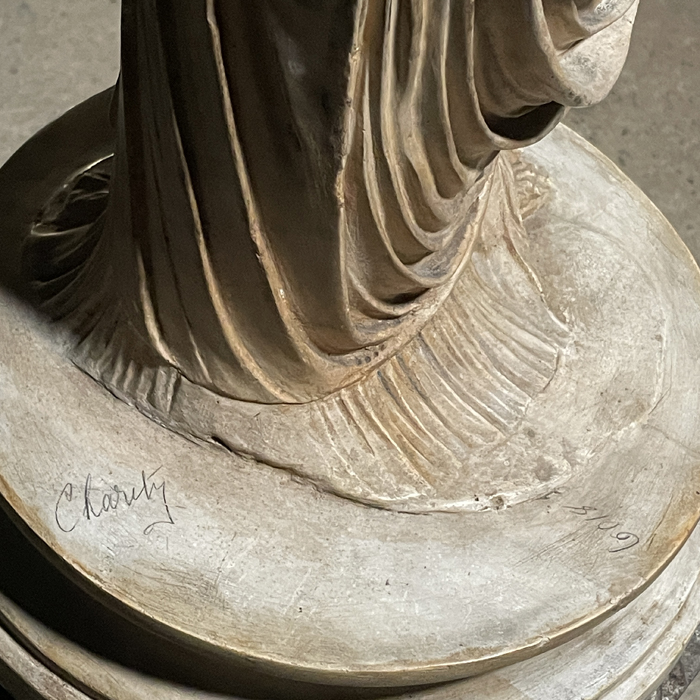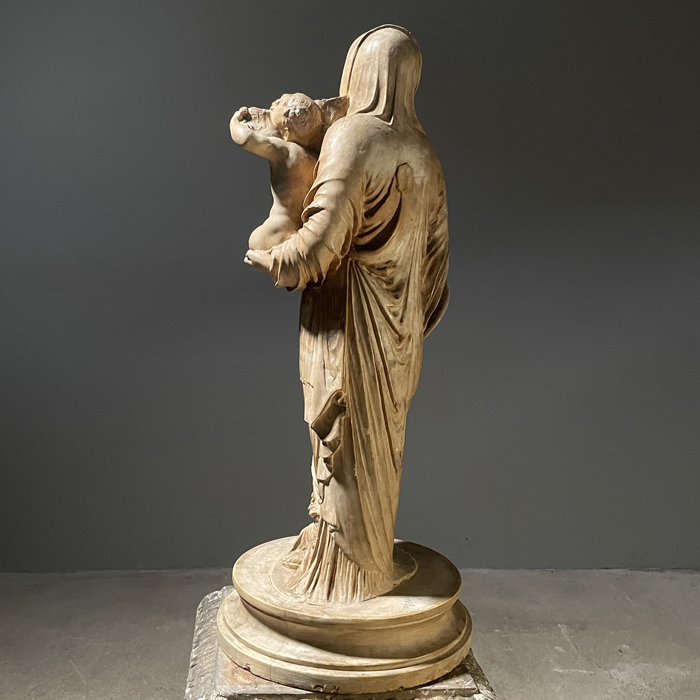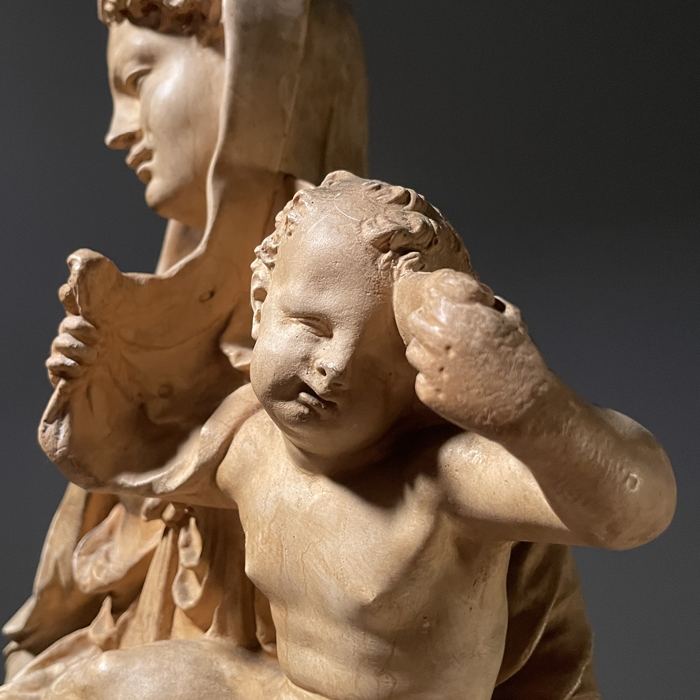“Charity” a Victorian plaster cast of one of the marble Virtues intended for the early 16th Century tomb of Gaston de Foix
the classically dressed standing figure with a veiled head, sandalled feet, and her right breast bared, carrying an infant who grasps the veil and turns away, a coin proffered from her right hand, raised on a torus plinth,
£5,600
On 11th April 1512 Pope Julius’ forces were routed by the French (combined with the local Ferranese) at the Battle of Ravenna – one of the large battles in the so-called “War of the Cambrian League”. A young general called Gaston de Foix, nephew of the French king and governor of Milan, oversaw this costly win but, in the chaos of the aftermath of the battle, was himself killed (along with 10,000 others that day). Despite the victory Gaston’s death spooked the French forces and was to lead to their retreat from the area. It was only when Louis’ successor, Francis I, re-entered Milan six years later that the commissioning of a grand memorial tomb to Gaston de Foix (1489-1512) “The Thunderbolt of Italy” got underway. The French turned to the Milanese workshops of Agostino Busti – known as Bambaia. He was thought to have spent his formative career in France and was later involved with the continuing construction and ornamentation of the Duomo in Milan.
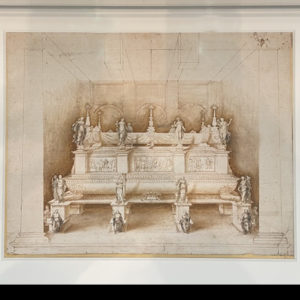
The exquisite carved marble figure of Charity at The Victoria and Albert Museum by Agostino Busti is part of that grand memorial tomb to Gaston de Foix. Pull a drawer underneath the display cabinet in Kensington and a delicate drawn design for the whole tomb is revealed. An effigy of the young hero carved in marble is depicted, raised on his tomb. It is all encapsulated within an arched architectural colonnade. Atop that colonnaded enclosure were a series of Virtues. The figure of Charity is one of them. The tomb, when completed, was to be destined for Santa Marta in Milan. Once again though in 1522, the French were pushed out of Milan. With much of the sculptural work complete, the tomb was never built. Busti’s carved effigy of Gaston de Foix can today be found in the Museo d’Arte Antica at the Sforza Castle in Milan together with another (headless) Virtue. Charity and two fellow Virtues are in the Victoria and Albert Museum.
This figure is likely the plaster “Type Cast” by Dominici Brucciani taken directly from the marble original at some time after . The Museum doesn’t generally put casts of sculpture on display in the cast courts if the original of that sculpture can be found elsewhere in the museum. Plaster Casts of Bambaia’s effigy and relief panels that were made by Eduardo Pierotti in Milan in 1884, together with some of the relief panels, can be found in the V&A cast courts.

